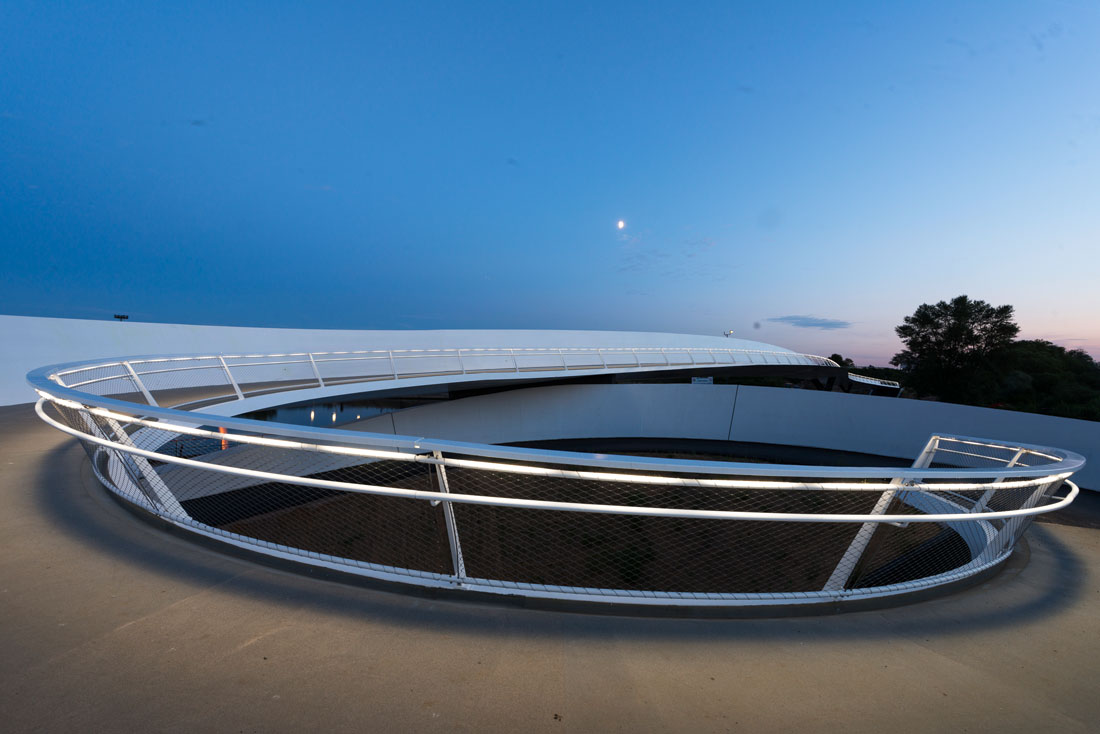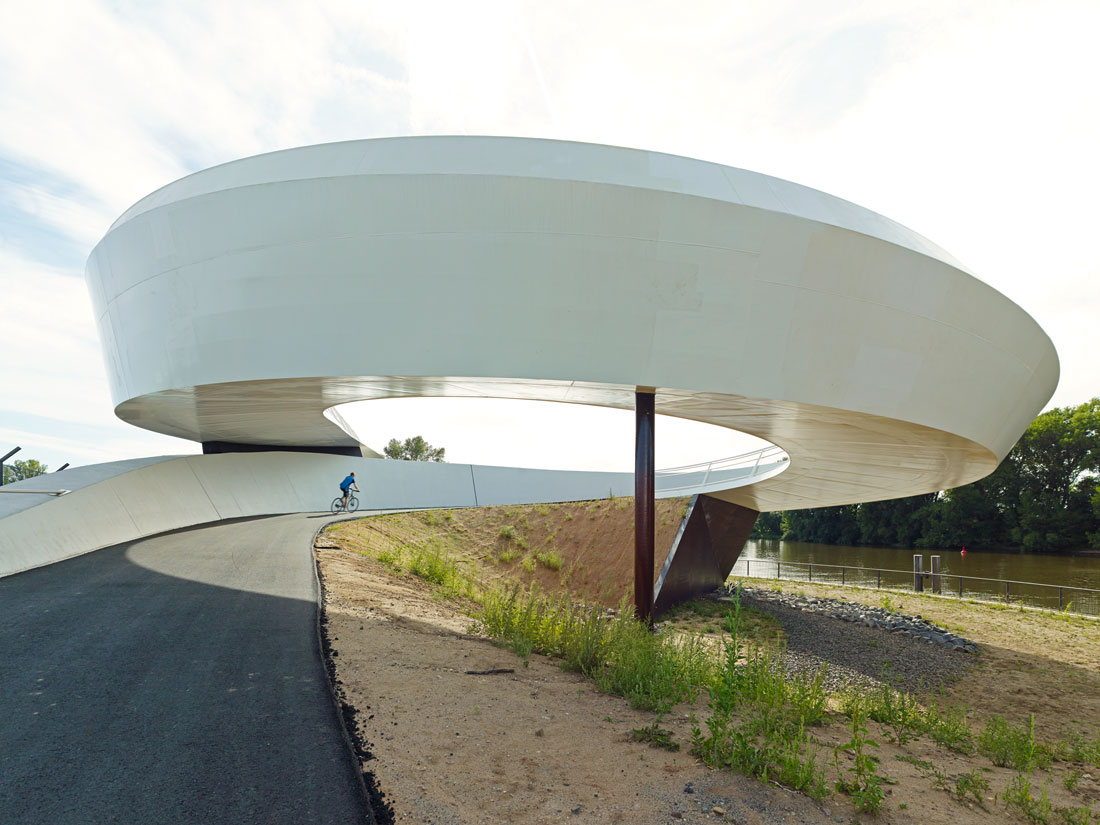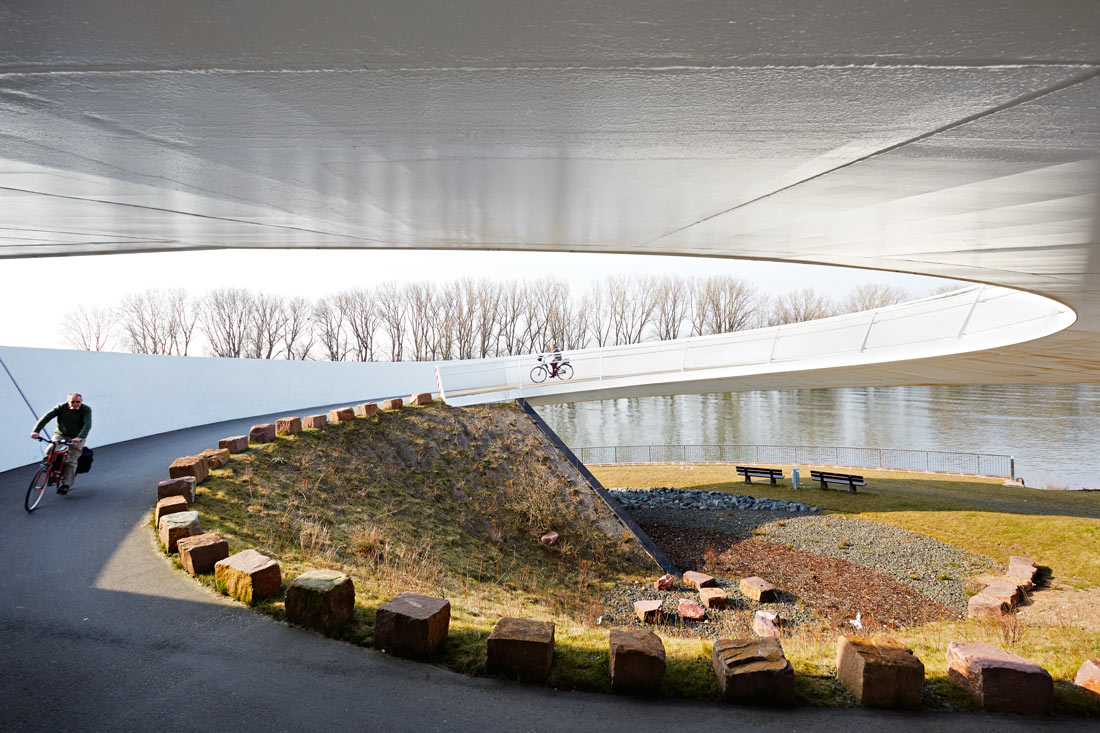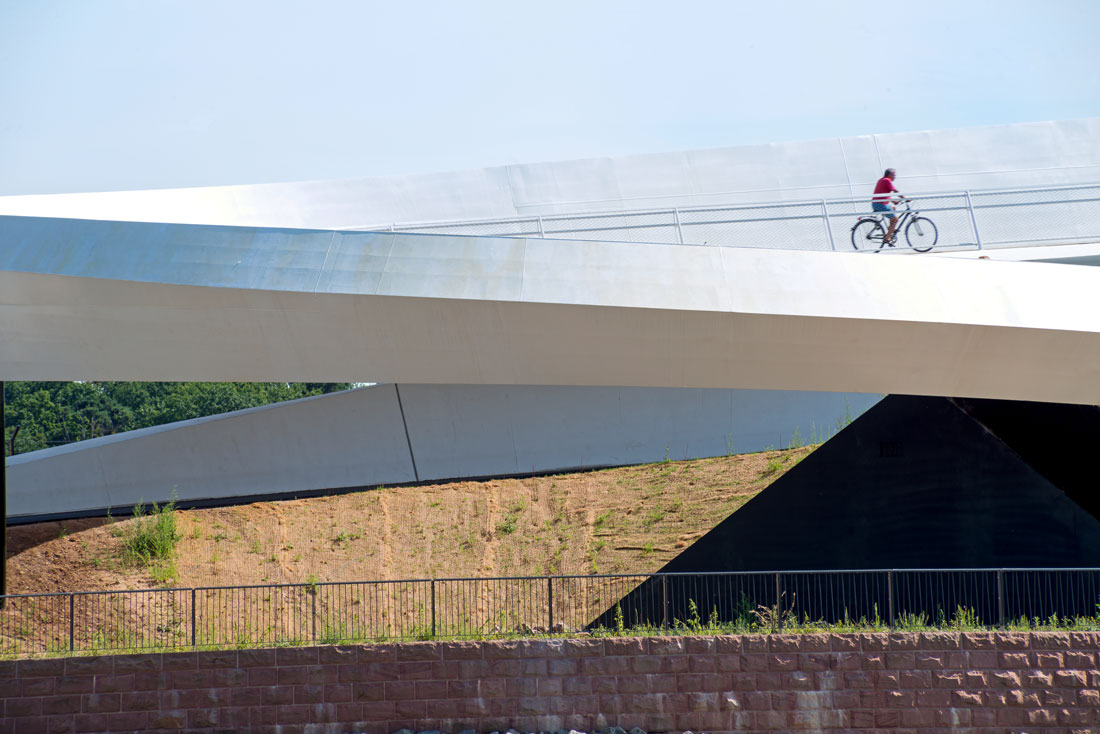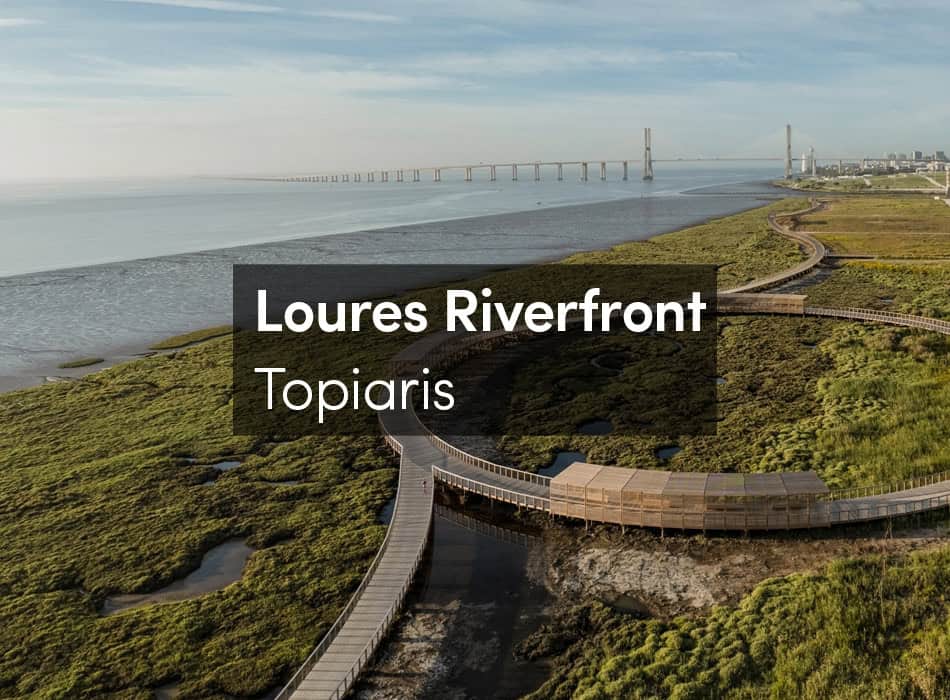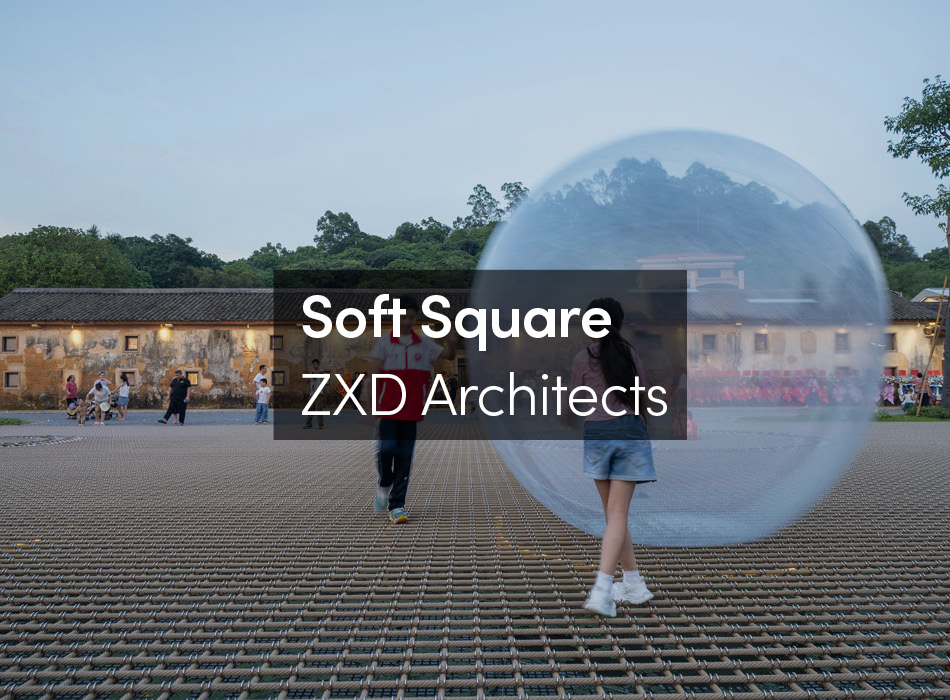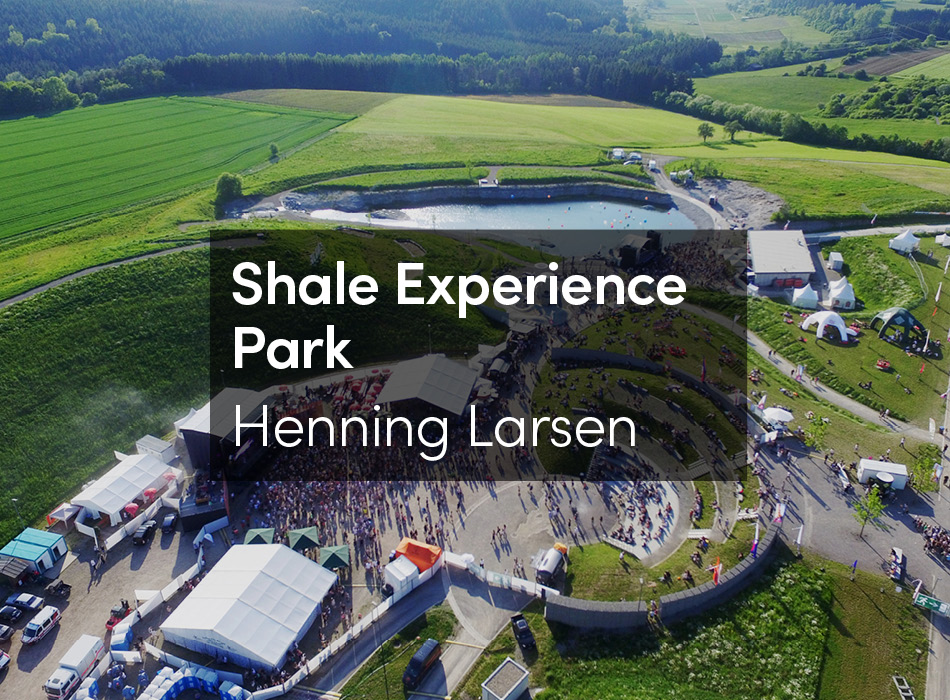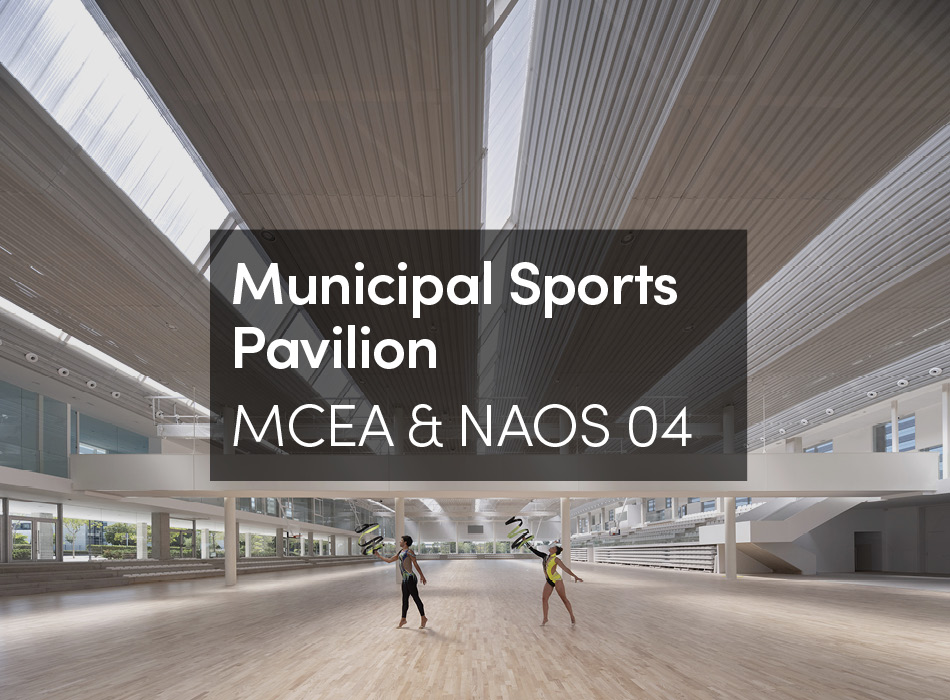The new white Ölhafen Bridge is an elegant, curved structure. It spans the 70-meter-wide entrance to the oil terminal harbor in Raunheim with a spiraling access ramp. This sculptural bridge design stems from Frankfurt architects schneider+schumacher. The clients appointed Schüssler-Plan as structural engineers for the bridge.
The bridge’s location is, on the one hand, influenced by the industrial character of the harbor, and on the other, by the Main River that runs parallel to it, with its attractive embankment and mature trees. The bridge will primarily be used by cyclists and pedestrians. The location of the bridge so close to the harbour’s storage tanks was of particular concern at the design stage.
The oil depot is used for the transfer and storage of highly flammable substances. For this reason, the bridge had to be designed to prevent people on the bridge from gaining access to the passing tankers, or at least to make it difficult. In view of these exacting circumstances, a solution was developed that not only fulfils all the safety requirements, but also takes into account the specific location of the bridge on the Main River.
The objective was to emphasize the bridge’s leisure use, and above all to provide unobstructed river views from the bridge despite all the safety issues. “A swiftly-rendered stroke of a paintbrush, connecting the two sides of the Raunheim Ölhafen” is how Prof. Michael Schumacher (architect and owner of the practice) describes the design approach.
The combination of design strategy and safety requirements has resulted in a bridge with an elegant, curved and sculptural form. The construction, with a total length of approximately 170 m, consists of a continuous five-part girder, which allows some 70 m to be spanned at the harbor entrance. Viewed from above, the bridge appears as a lightly undulating S-shape, which, at its north end, culminates in a circular access ramp: a 14-meter spiral, constructed of white concrete. On the side facing the oil terminal harbor, for security reasons, the ramp becomes a gently curving white wall, thus fulfilling the stringent safety requirements. By contrast, towards the Main River, the bridge opens up to allow unobstructed views of the river.
The bridge fits elegantly into its surroundings. Both its color and shape create a subtle connection to the harbor context.






